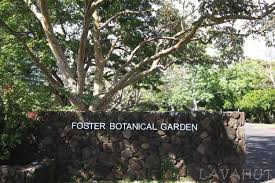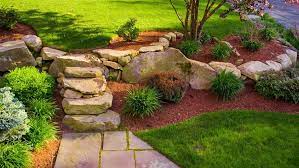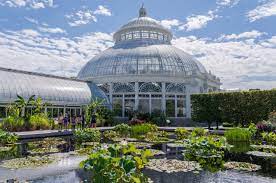Discover the Enchanting Beauty of Foster Botanical Gardens in Honolulu

Exploring the Beauty of Foster Botanical Gardens
Nestled in the heart of Honolulu, Hawaii, Foster Botanical Gardens is a lush paradise that offers a tranquil escape from the hustle and bustle of city life. With its diverse collection of tropical plants, towering trees, and colorful flowers, this botanical garden is a must-visit destination for nature lovers and plant enthusiasts.
Established in 1853, Foster Botanical Gardens is one of the oldest botanical gardens in Hawaii. Spanning over 14 acres, the garden features a wide variety of plant species from around the world, including rare palms, orchids, heliconias, and gingers. Visitors can wander through themed gardens such as the Butterfly Garden, Economic Garden, and Orchid Conservatory to learn about the unique flora that thrives in Hawaii’s tropical climate.
One of the highlights of Foster Botanical Gardens is its impressive collection of trees, some of which are over a century old. The garden’s iconic trees include towering monkeypod trees, majestic banyans with their intricate aerial roots, and fragrant plumeria trees that bloom year-round. Strolling along the garden’s winding paths shaded by these ancient giants is a truly enchanting experience.
In addition to its botanical wonders, Foster Botanical Gardens also serves as an educational resource for visitors of all ages. The garden offers guided tours led by knowledgeable docents who share insights into the history and significance of the plant species found within its grounds. Educational programs and workshops are also available for those looking to deepen their understanding of tropical plants and conservation efforts.
Whether you’re seeking a peaceful retreat in nature or hoping to expand your botanical knowledge, Foster Botanical Gardens offers a delightful experience for all who visit. Immerse yourself in the beauty of Hawaii’s flora at this hidden gem in Honolulu.
Exploring Foster Botanical Gardens: 6 Tips for an Unforgettable Visit
- Wear comfortable walking shoes to explore the extensive gardens.
- Bring a camera to capture the beautiful plants and flowers.
- Check the garden’s website for any upcoming events or guided tours.
- Respect the garden rules and regulations to help preserve its natural beauty.
- Take your time to relax and enjoy the peaceful surroundings of the gardens.
- Visit during different seasons to see a variety of blooming plants.
Wear comfortable walking shoes to explore the extensive gardens.
When visiting Foster Botanical Gardens, it is advisable to wear comfortable walking shoes to fully enjoy exploring the extensive grounds. With over 14 acres of lush gardens to wander through, comfortable footwear will ensure that you can traverse the various pathways and trails with ease. Whether you’re admiring the towering trees, meandering through themed gardens, or strolling along shaded paths, wearing comfortable shoes will enhance your experience as you immerse yourself in the beauty of this botanical paradise.
Bring a camera to capture the beautiful plants and flowers.
When visiting Foster Botanical Gardens, be sure to bring a camera to capture the stunning array of plants and flowers that adorn the garden. From vibrant orchids to towering palms, there are countless photo-worthy moments waiting to be immortalized. Don’t miss the opportunity to document the beauty of nature at its finest and create lasting memories of your visit to this botanical paradise.
Check the garden’s website for any upcoming events or guided tours.
To make the most of your visit to Foster Botanical Gardens, be sure to check the garden’s website for any upcoming events or guided tours. By staying informed about scheduled activities, you can enhance your experience and take advantage of opportunities to learn more about the diverse plant life and cultural significance of this botanical paradise. Don’t miss out on the chance to participate in guided tours led by knowledgeable experts who can provide valuable insights into the garden’s history and unique flora. Keep an eye on the website for updates and plan your visit accordingly to fully appreciate all that Foster Botanical Gardens has to offer.
Respect the garden rules and regulations to help preserve its natural beauty.
Visitors to Foster Botanical Gardens are encouraged to respect the garden rules and regulations in order to help preserve its natural beauty. By following guidelines such as staying on designated paths, refraining from picking flowers, and avoiding littering, guests can contribute to the conservation efforts that maintain the garden’s pristine environment. Respecting these rules ensures that future generations can continue to enjoy the splendor of Foster Botanical Gardens for years to come.
Take your time to relax and enjoy the peaceful surroundings of the gardens.
When visiting Foster Botanical Gardens, it is essential to take your time to relax and fully immerse yourself in the peaceful surroundings of the gardens. Allow yourself to slow down, breathe in the fresh tropical air, and appreciate the beauty of nature that surrounds you. Whether you choose to find a quiet spot to sit and reflect or leisurely stroll through the lush greenery, taking a moment to savor the tranquility of the gardens will enhance your overall experience and leave you feeling rejuvenated and connected to the natural world.
Visit during different seasons to see a variety of blooming plants.
Visiting Foster Botanical Gardens during different seasons offers a delightful opportunity to witness a diverse array of blooming plants throughout the year. From vibrant orchids and exotic heliconias in the summer to colorful hibiscus and fragrant plumeria in the spring, each season brings its own unique floral display to the garden. By exploring Foster Botanical Gardens at different times of the year, visitors can experience the ever-changing beauty of nature and discover new blooms that captivate the senses with their colors and scents.


